John Cheever, the sadly elegant chronicler of New England WASPdom, spent a year working for Franklin Roosevelt’s Works Progress Administration. He spent the next 40 years trying to forget about it.
Cheever belonged to a group that survived the Great Depression as employees of the Federal Writers’ Project. They put together the American Guide Series of books. Some, like Cheever, would go on to become America’s most important 20th century writers.
Cheever claimed he couldn’t stand “twisting into order the sentences written by some incredibly lazy bastards.” Harsh words for a staff that included Saul Bellow, Kenneth Patchen, Ralph Ellison, Nelson Algren, Studs Terkel and Zora Neale Hurston.
The real reason he hated the job was his shame at going on relief. His once-prosperous Massachusetts family had been ruined financially. “Poverty depressed him,” wrote his daughter Susan.
From Prosperity to Poverty
Cheever, born in 1912, was descended from an old Yankee family. Expectations for a life made easy by a trust fund weren’t out of the question. For most of his childhood he lived in an 11-room Victorian house in the best neighborhood in Quincy, Mass. He claimed his father owned a shoe factory, which is doubtful; more likely, he invested the family’s wealth in the company and succeeded selling shoes to retailers.
New England’s shoe industry was moving south, though, and his father lost his job. His mother opened a small gift shop in downtown Quincy, which her son called “an abysmal humiliation.” His parents separated.
Cheever’s writing would reveal a keen sense of what his old New England family had lost. He lovingly bathed his prose in details such as the polished silver, the fragrant linen, the cocktails on the terrace and the sound of someone rolling the tennis court. Cheever set his stories in boarding schools, country clubs and summer cottages on the sea. He peopled them with headmasters and shipyard executives, cooks and gardeners, lawyers and ladies who wouldn’t allow beer cans on the dinner table. Like F. Scott Fitzgerald, he romanticized wealth while exposing the corruption behind it.
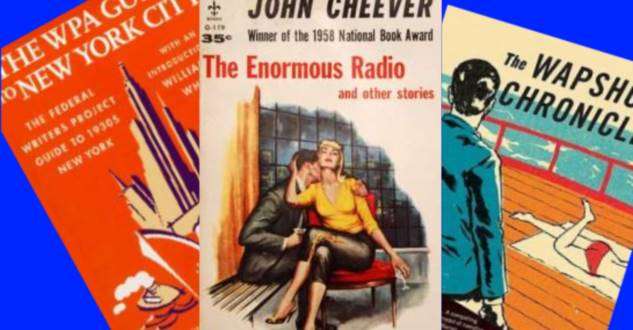
John Cheever, Dropout
Young Cheever dropped out of high school after he won a short story contest sponsored by the Boston Herald. At 20, the last of his father’s money disappeared and the family lost its house to foreclosure. Cheever moved into a Beacon Hill apartment with his older brother, but soon decided to get out of town. For the next few years he tried to make a go of it as a writer, dividing his time between Yaddo, the writer’s colony in Saratoga Springs, Manhattan, Quincy and Lake George, N.Y., where he worked as a caretaker.
By 1938 he was broke, living in a six-by-eight furnished room in New York’s West Village and subsisting on stale bread, buttermilk and raisins. He wrote an elegy to New England’s economic decline, which had affected him so personally. Scott Donaldson in his biography quotes a book review Cheever wrote in The New Republic: “For the glorious seaboard of the China trade means to most of us now a four-way turnpike and a few brilliant old women and the main stem girls in Portland and empty harbors and fugitive mill towns and the smell of the tourist camps and a cretin at the gas station.”
No Gravy for Her
Cheever accepted a $50-a-week job at the Federal Writers’ Project, part of the New Deal’s Works Progress Administration. From 1935 to 1939, the Project employed about 5,000 people a year as writers, editors and information gatherers. Its purpose was to present a vision of America showing the people, history and culture of each state.
The job meant Cheever had to move to Washington, where he rented a room in a boardinghouse and dined with fellow government employees. One woman at the table made it a point to criticize the WPA. Cheever listened in silence and pretended to be deaf when she asked him to pass the gravy.
He hated Washington: the dreary bureaucrats, the Southern accents and the nakedness of the social climbing. He later included a character in his novel The Wapshot Chronicle who kept a chart of his social progress. It displayed his 18 dinners in Georgetown, with his hosts listed and graded according to their importance.
The New York City Guide
In November Cheever agreed to help finish The New York City Guide, which meant returning to the Lower West Side. His coworkers included Richard Wright, who would later write Native Son, and Beat poet Kenneth Patchen. Cheever wore button-down shirts, a gray flannel suit and affected a patrician accent.
Happy to be back in New York, Cheever combed the city, observing the night workers returning home, the bums on abandoned piers, waitresses at Child’s, tourists aboard the Staten Island Ferry. His careful studies of humanity on the Lower West Side would find their way into The New York City Guide and into his later fiction.
He was unsettled, though, by the controversies swirling around the New York office. The original director was a one-legged poet named Orrick Johns, whose appetite for liquor and sex got him into trouble. One night, he was steering a pretty employee toward his apartment for a tryst when her boyfriend encountered them. The boyfriend knocked him out cold, poured brandy on his wooden leg and set it on fire.
The New York office employed a few Communists, which attracted the attention of Congressman Martin Dies of Texas, chairman of the House Committee on Un-American Activities. Cheever’s return to New York coincided with the Dies Committee’s attacks on the Writers’ Project.
By May 1939, the New York Guide was finished, and Cheever quit after one year on the job.
Short Commute
Cheever wiped the Federal Writers’ Project from his memory after he left, according to Donaldson. His Republican parents were probably ashamed of their son going on the dole, and he was probably ashamed of it too. In 1980 he ran into Jim McGraw, a colleague from the Project he hadn’t seen in 40 years. McGraw said it was a long time since he had seen him since the Writers’ Project. Cheever’s response: “I don’t want to talk about it.”
In 1946, married and with a young daughter, Cheever was living in a New York City apartment building near Sutton Place. He could barely afford it. Every weekday morning he put on his good suit and hat and rode down the elevator with the other men in the building. Except Cheever went to the basement, stripped to his underwear, and typed his stories on a makeshift desk. At the end of the workday, he put his suit and hat on and rode back up in the elevator.
Working for the Federal Writer’s Project must have been like getting caught in his underwear.
What Happened Next
Cheever would go on to write short stories for the New Yorker during the magazine’s golden age. He won recognition as one of the most important short story writers of the 20th century. Critics called him the “Chekhov of the Suburbs.” He is credited with capturing the suburban ennui that inspired Ordinary People, American Beauty and Mad Men. It’s no accident that Ossining, N.Y., was the home of Don and Betty Draper; it’s where Cheever lived until his death in 1982.
In 1995, The New York Times called The New York City Guide “one of the ten best books ever published about New York.”
We are indebted to Scott Donaldson’s John Cheever: A Biography, and David A. Taylor’s Soul of a People: The WPA Writers’ Project and, of course, to The Stories of John Cheever. This story was updated in 2022.
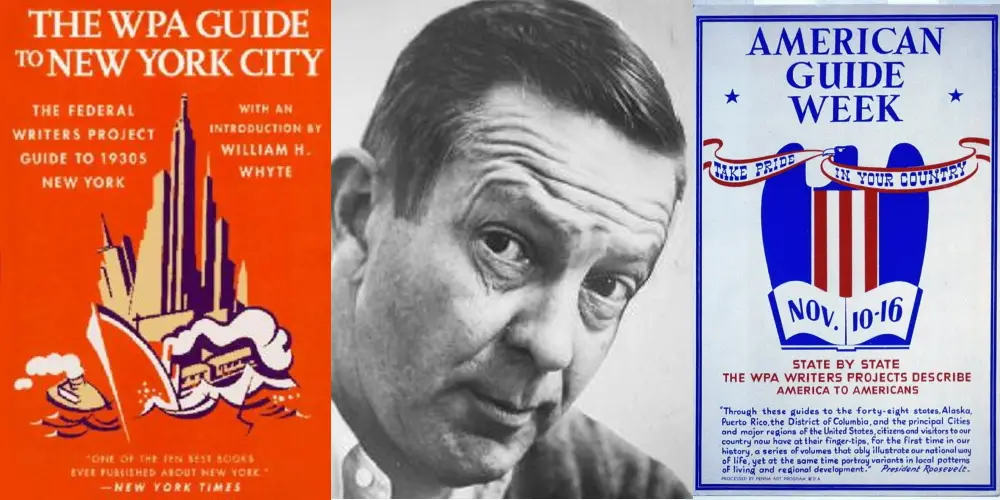
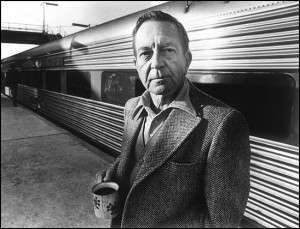
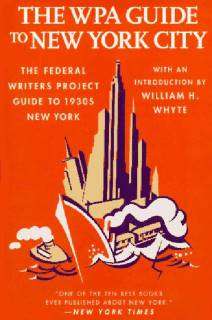
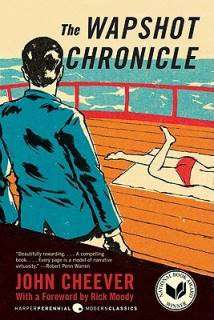
9 comments
[…] John Cheever: Reluctant New Dealer on the Way to Fame […]
[…] John Cheever: Reluctant New Dealer on the Way to Fame […]
[…] Haggerty of 62 Austin Street told the sad tale of the vinegar valentine to Mrs. Emily B. Moore, a Works Progress Administration worker taking oral histories for the Living Lore […]
[…] was an outspoken critic of FDR and his New Deal (Tarkington also hated automobiles), and he was the point man on the public crusade against the […]
[…] it all. In late 1939 and early 1940, he told his story to Louis Pare, an interviewer with the Federal Writers Project for the Folklore […]
[…] Franklin Roosevelt ordered the Civilian Conservation Corps and the Works Progress Administration to clean up the mess. It then took two years for the 50 CCC camps and 15,000 WPA workers in the […]
[…] asking for help, and on Oct. 8, 1938 Roosevelt ordered the Civilian Conservation Corps and the Works Progress Administration to clean up the mess. There were then 50 CCC camps and 15,000 WPA workers in the stricken region. […]
[…] Wright, Ralph Ellison and Margaret Walker. After the magazines folded she went to work for the Federal Writers Project of the Works Progress […]
[…] novelist John Cheever boasted of Ezekiel Cheever as his ancestor, but Ezekiel was just a cousin of his ancestor, Daniel […]
Comments are closed.